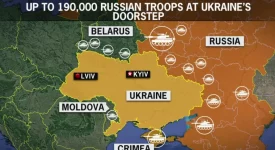European Refugee Policy: Pathways to Fairer Burden-Sharing
Steffen Angenendt, Marcus Engler a Jan Schneider (Stiftung Wissenschaft und Politik)
Where to put them? The words of a famous Czech author, ?apek, made their way into all European institutions. However, unlike the author of a novel for children titled ‘Dašenka’, the EU institutions’ main concern is where to place the foreigners who apply for asylum in the EU. The countries that receive the largest number of long-term refugees are calling at its European neighbors for greater solidarity and equitable “redistribution of refugees” among all European countries. Nevertheless, since 1990, the Dublin Convention, which stipulates that asylum seekers must submit their applications in the first EU country to which they enter and in no other, has been applied. This country cannot send the foreigner/refugee elsewhere and, at the same time, it has to consider his or her request.
Since 1990, advancements have been made in the rules and standards of treatment of refugees. Their rights were also expanded. The harmonization of asylum policies among EU members is also being realized. Despite these improvements, the most urgent topic of this issue remains untouched: the sense of responsibility for receiving refugees.
The authors of this research paper have come up with a proposal of distribution of immigrants on the basis of quotas determined by the size of the country, its population, unemployment and economic situation. For example, according to their calculation, the Czech Republic should have accepted about 25,000 refugees in the four-year period between 2008-2012. However, it accepted only 4,500 so it did not meet the quota by 82%. On the other hand, the Swedes exceed their quota by 267 %. Over the same period, Sweden should have accepted 42,000 immigrants but, in fact, it received 154,000 and thus significantly exceeded its quota. Other countries that exceeded their quote are Belgium, Austria and Greece. All other states did not meet their quotas.
As an alternative, the authors propose the establishment of a solidarity fund to which all EU member states should contribute according to their quota. Those states that chronically accept fewer refugees than they should would become net payers while states heavily loaded with immigrants would receive financial compensation. Under these conditions, the Dublin rules could continue to exist. Political will for this type of solidarity seems to be absent at this moment. Immigrants often appear as an additional burden to the sinking European economy and politicians do not even want to hear about solidarity, which would cost them their own popularity.
(The study can be uploaded here: http://www.swp-berlin.org/fileadmin/contents/products/comments/2013C36_adt_engler_schneider.pdf)
EU Democratic Legitimacy and National Parliaments
Sonia Piedrafita (Centre for European Policy Studies)
The transfer of powers to the European level is increasingly taking the form of intergovernmentalism and centralization by creating supranational institutions (like the European Commission or the European Central Bank). This, however, raises concerns about the role of national parliaments in the EU. In general, there is disagreement whether the current empowerment of the European Parliament should be the preferred scenario or whether it would be desirable to have a greater involvement of the national parliaments. What is certain is that the increasing powers of the European Parliament do not address the issue of democratic legitimacy. In fact, the overall concept of democratic legitimacy is very questionable if we talk about non-state actors such as the EU.
The national parliaments were first mentioned in the main text of the Treaties in 2009, when the Lisbon Treaty came into force. Protocol (No. 1 of the Lisbon Treaty) on national parliaments expands the number of documents that are forwarded to national parliaments for discussion, which includes all drafts of legislative proposals, consultation documents, annual legislative program and any other instrument of legislative planning of the Commission, Council, etc. The new protocol (2), which deals with the principles of subsidiarity and proportionality, sets the conditions for the application of these principles and provides for a system monitoring possible violations. In this way, the Lisbon Treaty can include both, the measures to improve scrutiny of the national governments in EU affairs, as well as other mechanisms that support the active participation of national parliaments in the EU.
In order to ensure that the EU will act in accordance with the principle of subsidiarity, Protocol 2 lays down the EWM (Early Warning Mechanism). Within eight weeks of the European Commission’s proposal, each chamber of the EU’s national parliaments can submit a reasoned opinion stating why it considers the drafted legislative act inconsistent with the principle of subsidiarity. The Commission must reply to the reasoned opinion and it must take the opinions of national parliaments into account. Unfortunately, it is often the case that the responses to the governments’ reasoned opinion come too late or never. In other cases, members of parliament’s chambers complain that the answers are very general and that their objections have not been resolved fairly (to their satisfaction).
The European Commission should do more to provide better feedback to the opposition members of the European Parliament and engage in genuine political dialogue with national parliaments. Cooperation on the annual work program and the improvement of interparliamentary cooperation can lead to a better parliamentary scrutiny of the governments at the national level. Such actions could also approximate the European policy to domestic parliaments and citizens of the EU member states. Finally, the active involvement of the national parliaments will have a positive influence on EU policy-making and implementation of EU legislation in the member states.
(The study can be uploaded here: http://www.ceps.be/book/eu-democratic-legitimacy-and-national-parliaments)
Put to the Test: The Eastern Partnership and the EU
Florent Parmentier (Notre Europe – Jacques Delors Institute)
Four years have passed since Poland and Sweden initiated the Eastern Partnership (EaP), which was created in response to the French Union for the Mediterranean that was founded a year earlier. The author of this policy paper, Florent Parmentier, argues that EU member states with significant interests in the countries adjacent to the EU external borders have been creating, with the help of European institutions, strategic tools since the mid-nineties, when France established the Euro-Mediterranean Partnership in response to the EU’s enlargement policy implemented from Berlin. In his study, Parmentier defines the EaP’s key objectives, explores in depth the variety of policies and economies of six states that are part of it, and offers readers the prognosis of the Eastern Partnership in 2020.
The aim is to export the EaP and, by that, to expand European legislative and political model to the region, which is perceived as unstable or possibly as a source of instability elsewhere. There are three ways to achieve this goal – by strengthening political ties through the Association Agreement (AA ), by strengthening economic ties through free trade agreements (DCFTA ), and by increasing of mobility. Cooperation takes place at several levels, from the summits and meetings of foreign ministers to the working groups of the European Parliament and civil society. The problem lies in the fact that various interest groups in the EU involved in the process do not have compatible long-term goals or even a clear picture of the outcome of the EaP. This situation contrasts with Russia’s clearly defined goal to attract all the countries of the former Soviet Union to join the Eurasian Union, using all means available. The European strategy is ambitious but it is also vague and incomprehensible. According to the author, the attempts for reform and modernization of the EaP for the last four years ended in disappointment.
The European Union must reflect diversity of the EaP states. Although Belarus and Azerbaijan, for example, rank both as potential partners, each of these countries requires a different approach. The EU should put pressure on national governments to implement agreements within EaP through civil society in these countries. In conclusion, the author presents four scenarios of future EaP development. The most optimistic scenario envisages the transformation of the region and the promotion of the European model through the support of the civil society. Author refers to the second scenario as the “modernization from above”. According to the author, the promotion of economic modernization is possible but not the promotion of political pluralism. Another scenario elevates the original elites of the regime into power after the change is initiated from below, by the people. The neo-authoritarian model presents the last scenario – it predicts rejection of the European “interference” and the distribution of economic opportunities according to power structures, forcing the government to control their population through authoritarian methods.
(The study can be uploaded here: http://www.eng.notre-europe.eu/011-17221-L-UE-a-l-epreuve-du-Partenariat-oriental.html)







